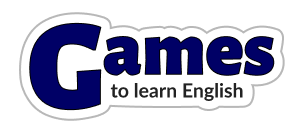Conditional Sentences Game
You can set this page as a homework task for a group of students; doing so will give you a record of who has completed the task. Visit the teachers' section for more information.
You can share this page by using the link below.
About
This is a game to practice or study English as a second language, specifically the focus is on forming conditional phrases of the form "if ..., then ...". Conditional phrases of this type are useful structures to learn, as they have a range of uses in both everyday life and practical settings.
The general idea behind this game is that by practising the "if ..., then ..." structure, students will become more familiar with it and integrate it into their range of language. Hopefully, students will go from being less familiar with conditional phrases, to being able to express conditional ideas in an effective way. In order to achieve this, the game uses a generally behaviourist approach of repeating the formation of the structure. The different images convey the meaning of a conditional situation, and then the learner practices forming the matching conditional structure. The specific phrases used in this game are perhaps unlikely to be used that much in everyday life; however, it is hoped that enough repetition will lead to transfer of the structure to other contexts.
There are 48 phrases in the game, with each having an image showing the meaning of the conditional situation. As it was necessary to have matching images, only conditionals that are easy to represent visually were used. About half of the 48 items are of type 0 or 1 (also known as first conditional or zero conditional). Most of the rest are of type 2 (unreal conditional), then a few are mixed 2/3 and one is type 3. Originally I didn't want to organize the items according to type, but it was necessary to do so, in order to avoid confusion and instances where an image could be multiple types. For example, the "if you drink a lot of water, then you will need the WC" item could easily be either first or second conditional. So, to avoid this confusion, the conditionals are grouped and shown by type. Also, unreal conditionals clearly show a thought bubble coming from a person's head to represent the fact that it corresponds to an idea rather than a real life situation. Likewise, for the mixed conditionals, an attempt was made to show some kind of regret for the person, thus corresponding to that kind of past conditional.
To play the game, you just have to click on the words to make the correct sentence. First, you look at the image and figure out the conditional situation. Then, you can look at the clause that is currently showing. And then, you can tap the words to make the rest of the conditional phrase. Sometimes the first part of the conditional is show and you have to form the second half; other times you are shown the second clause of the conditional and you have to form the first part. There are also a few items where you have to form both clauses. Points are awarded for clicking the correct words; while score is lost if mistakes are made. More points are awarded if the words are clicking in the correct order.
There are 8 rounds in total. For rounds 1 and 2, you have to make the "then" clause of the conditional; while for round 3 you have to make the "if" clause and for round 4 you have to make both clauses. Rounds 5 to 8 are similar, but involve unreal conditional structures. If you prefer, you can choose the "long" option on the first screen and play without round breaks. This long type of game allows for a higher score.
This game is made in Javascript using the CreateJS framework. If you have any comments, questions or feedback, then please use the form below to post a message.

Comments
It's a very good game to practise the conditional sentences. thanks a lot.
- Hesti
its fake
- fake
I really like this kinds of Game please provided more Thank you Ambrose pandey
- Amnvbrose
hi I´m Angela
- angela
it is a very good game for the 2nd Conditional
- valentin